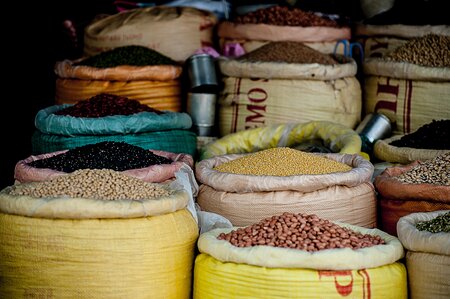Lentil
Lens
Lentil is one of the founding crops of agriculture. Lentils were domesticated at about the same time as wheat and barley in what is known as the Fertile Crescent: lentils have been found in archaeological sites in a crescent-shaped geographical area spanning from today’s Jordan north to Turkey and into Iran. Even today, a substantial portion of global lentil production is concentrated in this area, however the largest producers of lentils today are India and Canada. 60% of lentil production is in the South Asian region, including Bangladesh, Burma, India, Nepal and Pakistan. In Bangladesh and Nepal, lentil is the most important pulse crop for human consumption.
The seed protein content of lentil is about 25%, and the crop contains no cholesterol, virtually any fat, and very low levels of anti-nutrients. Apart from proteins, lentils are also rich in vitamin A, fiber, potassium, B vitamins, and iron. Lentils’ many colors, from yellow, to orange, green and black, also reflect differences in taste and nutritional composition. “Le Puy” lentils, famed in French cuisine for their earthy flavor, were the first dry vegetable protected by the French AOC (Appelation d’Origine Controlée) designation, normally used to protect better-known products of French agriculture such as wines and cheeses.
Lentil plants provide a number of functions aside from being sources of human food. Lentil straw is an important fodder for small ruminants in the Middle East and North Africa, and the nitrogen sequestrating plant improves soil fertility and therefore increases sustainability of agricultural production systems. Lentils are an increasingly popular crop and world production has been rising steadily for the last 25 years; global production has more than tripled since 1980.
The International Centre for Agricultural Research for Dry Areas in (ICARDA) has an international mandate through the CGIAR system to improve this crop. One goal of the mandate is to facilitate the spread of winter planting in highland West Asia. The researchers are clear about where they find the resources for the development of the better-adapted varieties:
“The first step is to find plants that can survive the harsh winter cold. ICARDA stewards a rich collection (about 10,500 accessions) of lentil germplasm including wild relatives. Evaluation of this material has revealed enormous variability in cold tolerance. These accessions are the raw material that ICARDA is using for breeding elite lines for winter cultivation.”



